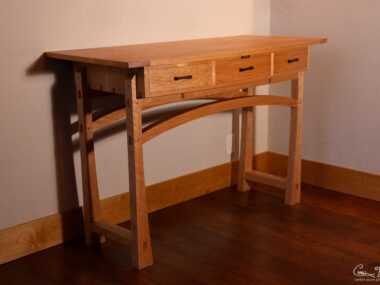Photography & Video Equipment
Cameras
I use the 5D for most all my still image photography and also some of my video shooting. I love it for photography; the only drawback is that it is rather heavy. It isn’t ideal for video, and I find it very difficult to get everything set correctly — particularly when I need to get things into focus.
While I like the 5D, I would seriously consider a mirrorless camera. I was hoping my Canon lenses would fit on the Canon mirrorless making the upgrade consist of only the body, but unfortunately they are not compatible.
Lenses
I use this lens the most. I have the older version, and it has a slight rock to the lens, but it has always produced great images and works well in low light.
The 17-40 lens was my first expensive lens, and I had bought it for my first DSLR, the Canon Digital Rebel. I really like wide landscape photography, and thought the 17mm would allow me to pull more stuff in. In practice, I stopped using it almost entirely when I got the 24-70. I recently started using it again for videos; it works great to do wide shots in my office.
Canon EF 100mm f/2.8 Macro Lens
This is another lens that I have owned for a long time. For a long time I was interested in macro photography; particularly flowers. This lens served me quite well on my Digital Rebel, and still works fine on my 5D.
I bought this lens in 2011. It is relatively cheap, does well in low light, and has cool bokeh at f/1.4. I like the challenge of using fixed lenses; it forces you to move to get a better picture, instead of being lazy and zooming to fit. However, I rarely use it.
Canon EF 70-200mm f/2.8L IS II USM
I actually have the older version 1, but I don’t think there is much difference. I’ve used this lens a lot for long distance photos and also close up. I will zoom in from a little ways back to get good bokeh. The image stability seems to help a bit, but I’d rather see Canon implement it in the camera body than each lens.
Canon EF 2.0X III Telephoto Extender
I bought the extender for my trip to Africa and rarely used it. I thought it would be great for getting up close to animals, but it was incredibly difficult to do hand-held. It might have worked better with a tripod, but I didn’t have one on that trip. Since then, I have used it maybe one time.
Drone
In the world of drones, DJI seems to be king. I was thinking about getting a small drone to take on trips, and the Mavic Air came along and fit the bill for my needs. It takes fantastic video and RAW photos. It is incredibly easy to fly. The only disadvantage is the small size makes it hard to do hand catches; I worry about nicking my fingers.
Action Camera
If DJI rules the air, GoPro rules the ground. The Hero 5 is a bit outdated, but is waterproof and does decent video. The main problems with it are stabilization and sound. The latest Hero has better stabilization, but I don’t want to upgrade to just have the latest gadget. I’ve been using the camera for “extra shots” that I couldn’t get with the 5D, and I did all my Arizona Trail videos with it. The size and portability is super convenient.
Software
Adobe Lightroom Classic CC & Photoshop
I subscribe to Adobe’s Photographer plan, and at $10/month it is pretty reasonable. I generally do all my photo editing inside Lightroom. The Classic desktop version is the best; the cloud based version is, well, too much in the clouds. I don’t feel like I need to use Photoshop for photography; it is better for photo resizing and manipulation.
Apple Final Cut Pro
I wanted to switch to Premiere, and I gave it a really good try. Unfortunately, it is horrifically slow to find a particular clip I want. Final Cut is just so much faster for navigation. And rendering: Final Cut is hands down faster.
For HDR images, Photomatix has the most bells and whistles. You can do HDR directly inside of Photoshop using its built in software, but I prefer the power of Photomatix.



